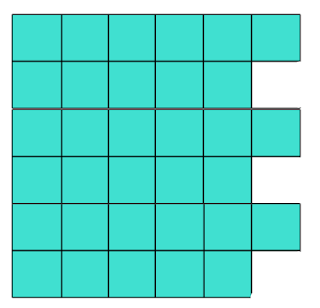I saw this image recently on Twitter with the question: How many ways can your find to make 7/7? Students can use pattern blocks to represent fractions, and then write number sentences and draw a representation to match their blocks. This could be a great exploration for beginning fraction concepts. It could be made with different wholes depending on your grade level.
It could also be asked as "How many ways can you find to make 7/6?...
What question might you ask to go with this pattern? Goals in our classrooms should include making the math visual, allowing for all students to be able to access the math, and to provide rigor for our students.
Open-ended problems like this provide all of these things for our students, and are relatively easy for us to embed into our instruction through workshop. The problems above are fraction problems, but couldn't primary students do the same with 5 or 13 cubes? How many ways can they find to make 5? Is that all of the ways? Can they prove it?
Putting our students into situations where they get to work with manipulatives and make sense of numbers is an important part of their learning. Can you think of ways that students in your classroom can explore number, whether it is whole numbers, fractions, decimals or something else? How many equations can they make, and can they be sure that they have found them all?















